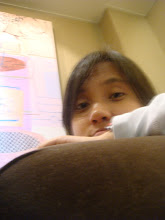Tracking is another research that is of interest to many especially to the field of biometrics. Some of the interesting researches include tracking of basketball players to be able to
 Cropped skin images used in obtaining the skin locus
Cropped skin images used in obtaining the skin locus  Skin locus obtained
Skin locus obtained Then we performed the algorithm based on the paper Adaptive skin color modeling using the skin locus for selecting training pixels.
Following the algorithm described in the paper, we were able to track the face of our victim.
 Tracked image of our victim
Tracked image of our victim
For this activity, the 305 class thanks Kirby Cheng for willingly volunteering himself to be our victim. I personally thank Irene Crisologo and Thirdy Buno for the discussions and Ma'am Jing for suggesting ways to improve the algorithm.
Following the algorithm described in the paper, we were able to track the face of our victim.
 Tracked image of our victim
Tracked image of our victimI had a hard time implementing the algorithm for face tracking. This is because of the skin color of our victim. As can be seen in the images, his face is yellowish and its sometimes blends with the color of the wall making it hard for the algorithm. To be able to address this problem the distance between the centroid of each clusters obtained for each image is checked. When the distance is higher than a defined threshold value, the cluster is rejected.
For this activity, the 305 class thanks Kirby Cheng for willingly volunteering himself to be our victim. I personally thank Irene Crisologo and Thirdy Buno for the discussions and Ma'am Jing for suggesting ways to improve the algorithm.

